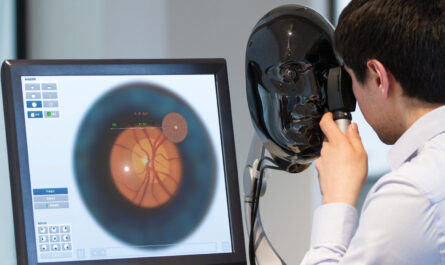Introduction
Lung cancer is one of the deadliest forms of cancers that takes lives of millions globally every year. Early detection and screening plays a crucial role in improving the survival rates of lung cancer patients. This article discusses various diagnostic methods and screening procedures that help doctors detect lung cancer at an early stage.
Imaging Tests
Imaging tests help doctors examine the structure of the lungs and surrounding areas to look for signs of cancerous growth. Some commonly used imaging tests for lung cancer diagnosis are:
Chest X-ray
Chest X-ray is one of the most basic and commonly used tests to initially check for any abnormalities in the Lung Cancer Diagnostic. It produces images of the lungs and chest cavity including the heart and large blood vessels. Any tumors or masses present in the lungs might be visible on a chest X-ray.
CT (Computerized Tomography) scan
CT or CAT scan is a more detailed imaging test that uses X-rays and computer technology to produce cross-sectional images or slices of the chest cavity. It can detect small lung nodules or tumors that may not be visible on a basic chest X-ray. CT scans are also useful in determining the size, shape and position of any tumors present.
PET (Positron Emission Tomography) scan
PET scan combines functional imaging with anatomical imaging capability. It uses radioisotopes injected into the body to show how organs and tissues are functioning. For lung cancer, the PET scanner produces 3D images highlighting any cancerous cells and tissues in the lungs that show abnormal metabolic activity. This helps doctors evaluate how far the cancer may have already spread in the body.
MRI (Magnetic Resonance Imaging) scan
Though not very commonly used for lung imaging, MRI uses powerful magnets and radio waves to generate very detailed pictures of organs and tissues. It provides a good picture of structures near the lungs like lymph nodes, chest wall, pleura, etc. that may be affected by lung cancer.
Biopsy
Imaging tests can suggest the possibility of lung cancer but cannot confirm the diagnosis. Tissue or cell sample from the suspicious area needs to be examined under a microscope by a pathologist for a definitive diagnosis of cancer. This is done by removing a small sample of cells or tissue through a biopsy. The two main types of biopsies for lung cancer diagnosis are:
Needle biopsy: In this minimally invasive method, a thin hollow needle is used to remove small tissue samples from suspicious areas under CT or ultrasound guidance.
Surgical biopsy: If the tumor is accessible, a small operation may be performed where a surgeon directly looks into the chest and removes larger tissue samples for analysis.
Molecular Testing
As our knowledge of lung cancer at molecular level increases, molecular testing of biopsy samples is becoming an important diagnostic and prognostic tool. These tests analyze specific genes, proteins and other molecules within cancer cells to determine the exact subtype and characteristics of an individual’s cancer:
EGFR (Epidermal Growth Factor Receptor) mutation test: Checks for mutations in the EGFR gene that may indicate response to targeted therapies like gefitinib or erlotinib.
ALK (Anaplastic Lymphoma Kinase) fusion test: Detects genetic rearrangements in the ALK gene that suggest better results with ALK inhibitor drugs like crizotinib.
Blood Tests and Sputum Cytology
While not as helpful as imaging and biopsy, certain blood tests and sputum analysis may provide some clue towards lung cancer diagnosis:
Complete Blood Count: May reveal high red blood cell count if the cancer is bleeding internally.
Lactate Dehydrogenase: Elevated levels could indicate active disease.
Sputum Cytology: Microscopic examination of coughed up mucus/phlegm may catch loose cancer cells in very early stage lung cancers.
Further tests like bone scan, MRI of the brain and chest, and medical tests for staging are also done once lung cancer is diagnosed through above tests.
Screening for Early Detection
Regular screening tests can help detect lung cancer in its very early stage, even before any symptoms appear. The main lung cancer screening recommended for high-risk individuals are:
Low-Dose CT (LDCT) scan
LDCT or low-dose helical CT scan uses lower radiation levels than a standard CT scan to produce high-quality images of the lungs. It can find lung nodules too small to show up on a regular chest X-ray. Studies have shown LDCT significantly reduces lung cancer mortality when used to regularly screen high-risk individuals like heavy smokers. However, it also has a risk of false-positive results requiring additional invasive tests.
Sputum Cytology
As explained above, frequent screening with sputum cytology tests the cells in mucus coughed up from the lungs. It can detect cancer at precancerous stage in some heavy smokers. However, its accuracy is lower than CT scans and it cannot image the entire lungs.
Other novel techniques under investigation for lung cancer screening include molecular/serum markers, virtual bronchoscopy, electronic nose, etc. but none have yet proven effective enough for widespread screening.
Screening Guidelines
Based on research evidence, the US Preventive Services Task Force (USPSTF) and various cancer organizations now recommend annual LDCT lung cancer screening for:
– Current or former heavy smokers aged 55–80 years who have smoked at least 30 pack-years and either still smoke or quit within the last 15 years.
Research is ongoing to establish optimal screening strategies for other at-risk groups like younger smokers or those exposed to radon, asbestos or other lung carcinogens. Early detection through screening gives the best chance for successfully treating lung cancer.
With advances in imaging, molecular diagnostics and screening, doctors now have better tools to detect lung cancer early even before symptoms appear. Regular screening of high-risk groups has the potential to tremendously reduce lung cancer mortality rates globally. At the same time, overdiagnosis and false-positive results are a concern which need to be carefully balanced while implementing any widespread screening programs. Overall, a multidisciplinary approach combining advanced testing and evidence-based screening holds promise for improving lung cancer outcomes.
*Note:
1. Source: Coherent Market Insights, Public sources, Desk research
2. We have leveraged AI tools to mine information and compile it



